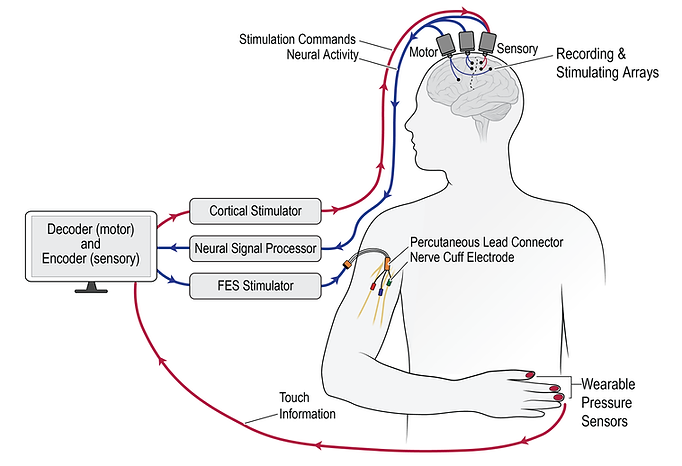Restoring Sensation After Spinal Cord Injury

Sensation and motor control after spinal cord injury
Spinal cord injuries (SCI) can impair the communication between the brain and the body below injury. In extreme cases, the person can be paralyzed and have no feeling of their body. Previous work has focused on decoding movement intent which can be used to control cursors, virtual hand avatars, and robotic limbs. Many of these studies rely on visual feedback; however, able-bodied individuals leverage on tactile and proprioceptive feedback to increase the dexterity of their movement. Several research teams have added the sense of touch back to people with SCI using intracortical microstimulation (ICMS), demonstrating that adding sensory feedback improves the ability of the participant to grasp objects while controlling a robotic limb (Flesher 2016, Flesher 2020). Research conducted at CWRU in Dr. Bolu Ajiboye’s lab has combined functional electrical stimulation with cortical motor decoding to restore arm and hand movement to a person with SCI (Ajiboye 2017).
The collaboration between Dr. Graczyk and Dr. Ajiboye is restoring the sense of touch as well as motor control to the arm and hand of a person with a sensory-incomplete SCI. We are exploring several modes of somatosensory feedback including tactile indentation, peripheral nerve stimulation (PNS), and intracortical stimulation (ICMS). We are evaluating the neural representation and the perceived sensation evoked by these sensory modalities. We are incorporating sensory feedback into the motor decoding and FES system to increase the dexterity of object interaction tasks.
How are we restoring it?
Team members leading this research


_edited.jpg)